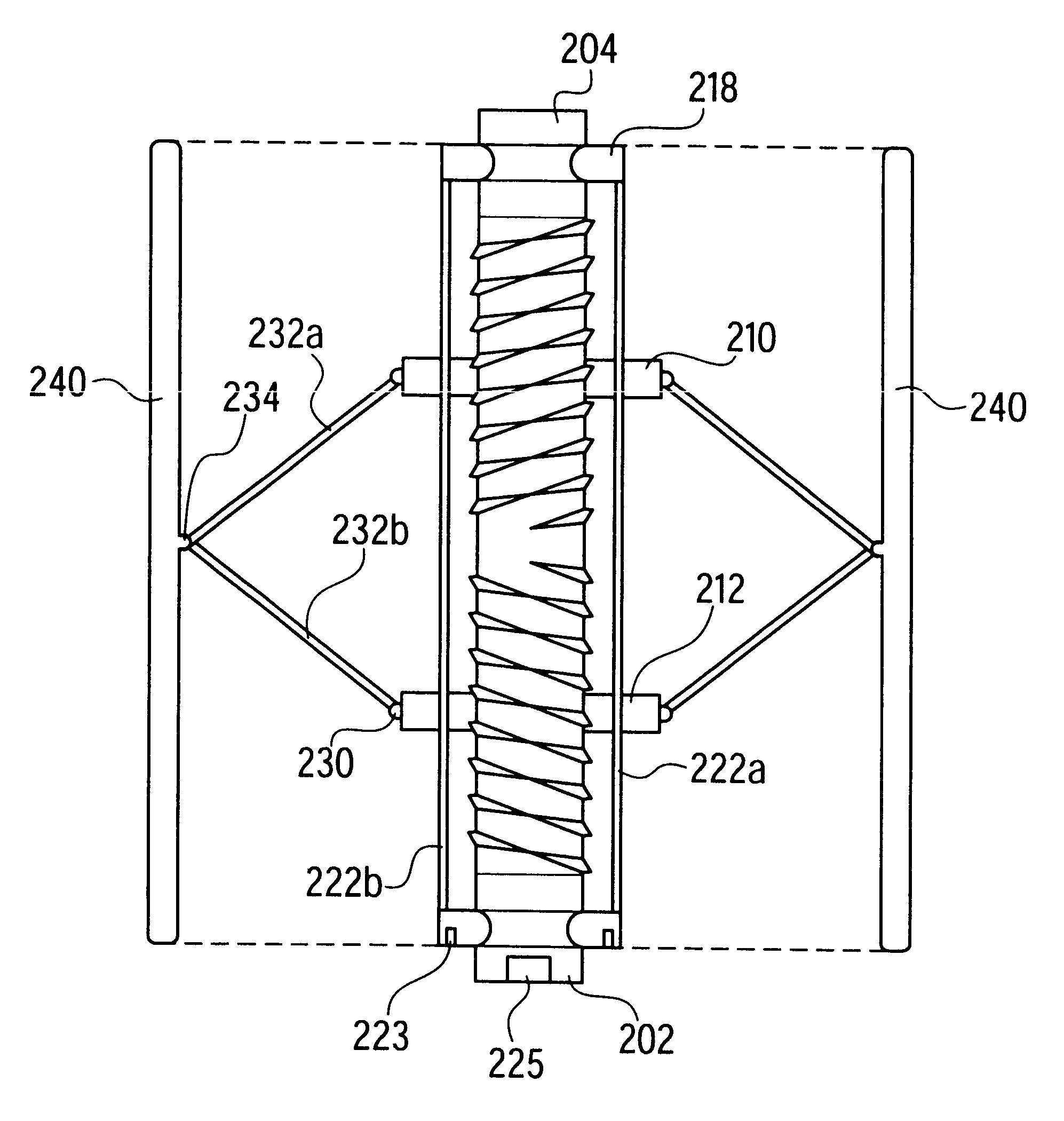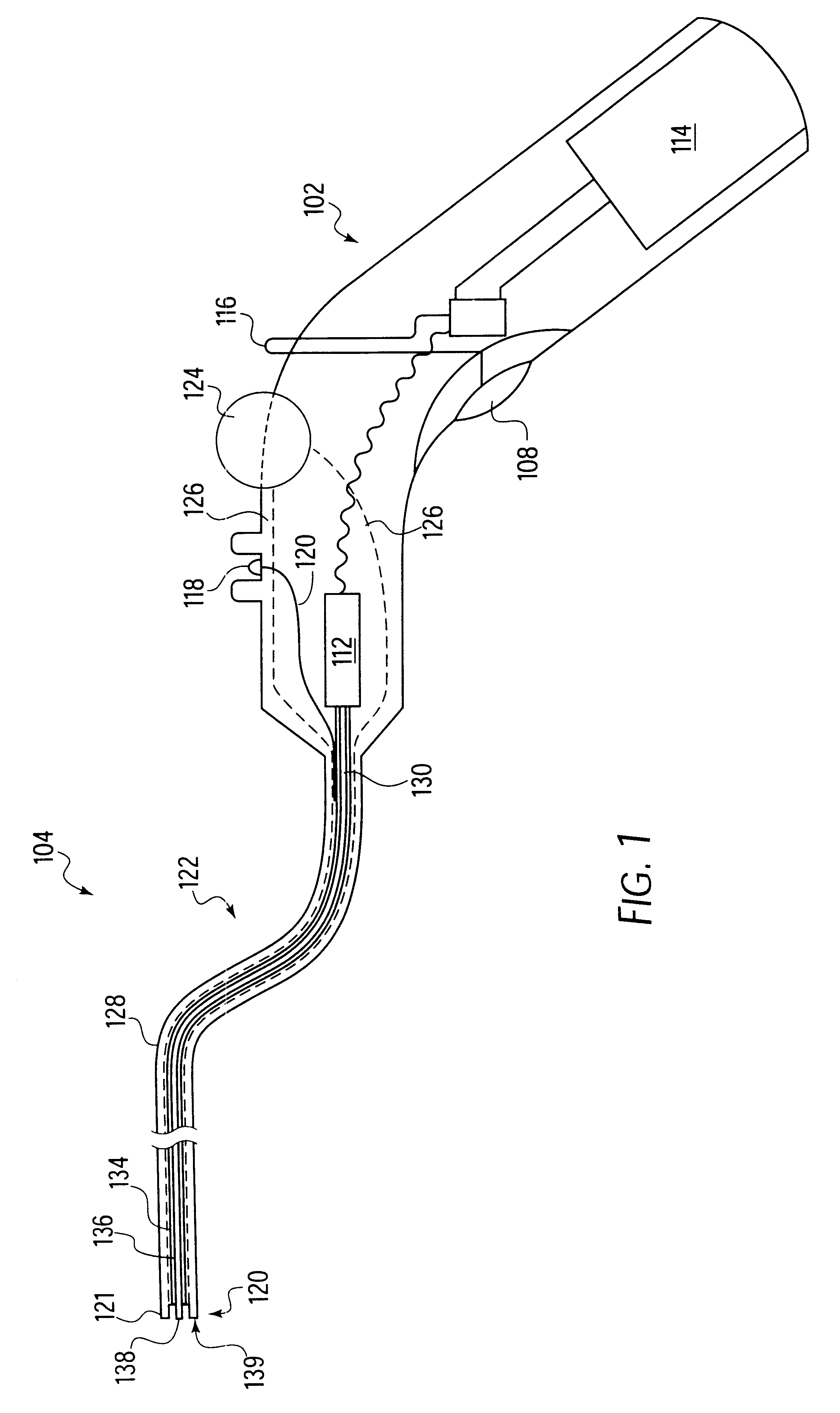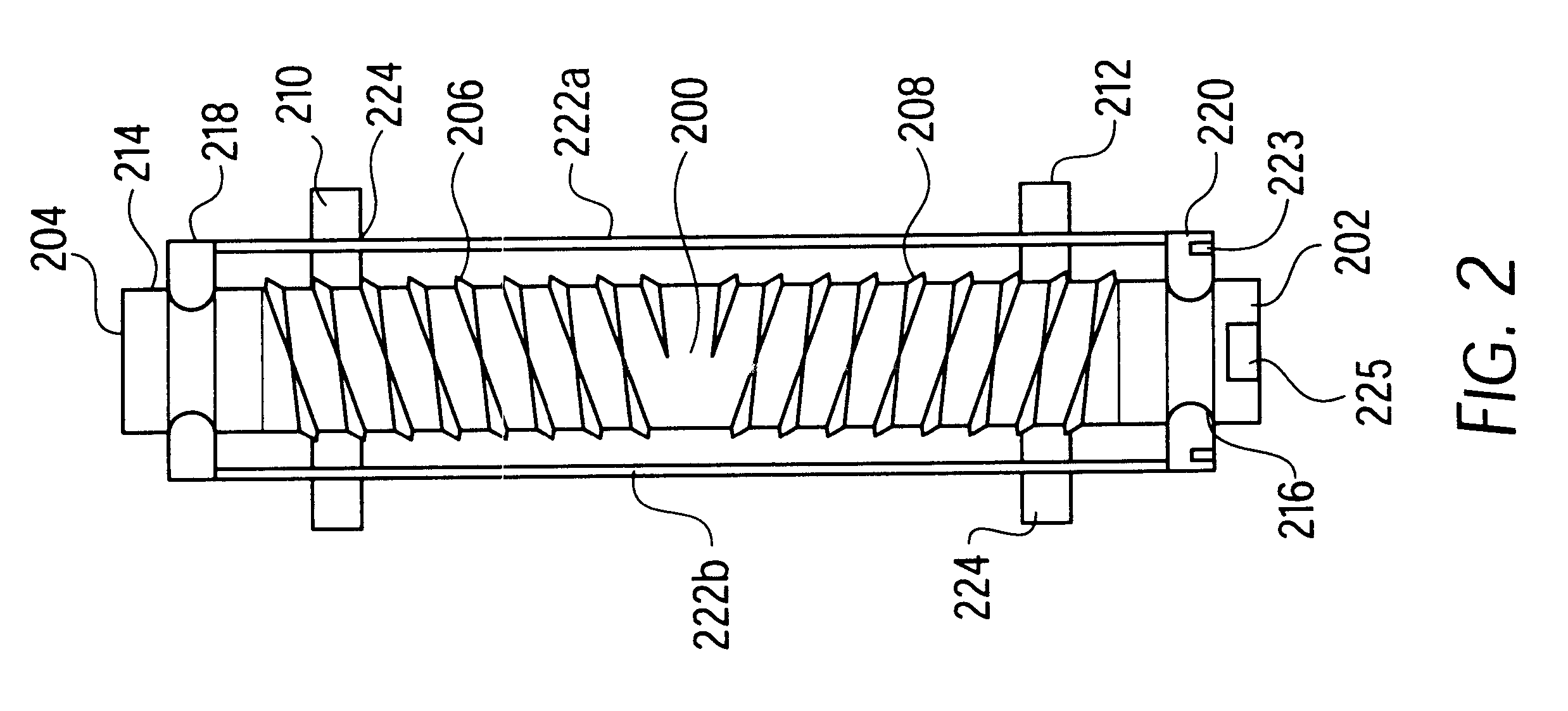Vessel and lumen expander attachment for use with an electromechanical driver device
a technology of vascular expanders and driver devices, which is applied in the field of vascular expanders, can solve the problems of inability to insert devices, large hospitalization and tremendous rehabilitation, and the inability to fully invasive procedures, and achieve the effect of slowing down the potential re-stenosis of the vessel and increasing fluid flow
- Summary
- Abstract
- Description
- Claims
- Application Information
AI Technical Summary
Benefits of technology
Problems solved by technology
Method used
Image
Examples
first embodiment
Referring now to FIGS. 3a and 3b, the present invention is provided in a pair of cross-sectional views; the first illustrating the attachment in a semi-expanded position, and the second illustrating the attachment in a fully extended position. In this embodiment, each of the nuts 210,212 are coupled to one another at a plurality of circumferential sites by means of a series of flexible joints, or pivots 230. More particularly, each of the pivots 230 is formed by a pair of spokes 232a,232b, one 232a of which is attached to the first nut 210 at a circumferential site thereon, and the other 232b being similarly mounted on the second nut 212. Each spoke 232a,232b is fixed at one end to its respective nut 210,212 by a joint which permits the spoke to rotate radially outwardly. At the other end of each spoke 232a,232b, each is coupled by a similar joint 234 to the distal end of the corresponding opposing spoke, such that the connected spokes may expand radially outwardly in an umbrella-li...
second embodiment
Referring now to FIGS. 4a and 4b, a second embodiment is shown. It shall be understood that the spokes 232a,232b need not be directly coupled with one another, but instead may be coupled together by a third pin 236 which is jointed with the distal ends of the spokes 232a,232b, and which moves radially with respect to the rod 200 in accordance with the motion of the nuts 210,212, but which remains parallel to the rod 200.
In both embodiments, the distal ends of the spokes 232a,232b are also coupled with a flexible tubular material 240 which forms a continuous expanding surface as the nuts 210,212 are brought together. More particularly, the flexible tube 240 includes sufficient axial rigidity (for example, by means of axial ribs, not shown), but sufficient radial expandability such that the expanding spokes 232a,232b create a cylindrical structure having a constant diameter and a series of radially spaced apart spokes extending from the inner surface of the flexible tube 240 to the ce...
PUM
 Login to View More
Login to View More Abstract
Description
Claims
Application Information
 Login to View More
Login to View More - R&D
- Intellectual Property
- Life Sciences
- Materials
- Tech Scout
- Unparalleled Data Quality
- Higher Quality Content
- 60% Fewer Hallucinations
Browse by: Latest US Patents, China's latest patents, Technical Efficacy Thesaurus, Application Domain, Technology Topic, Popular Technical Reports.
© 2025 PatSnap. All rights reserved.Legal|Privacy policy|Modern Slavery Act Transparency Statement|Sitemap|About US| Contact US: help@patsnap.com



